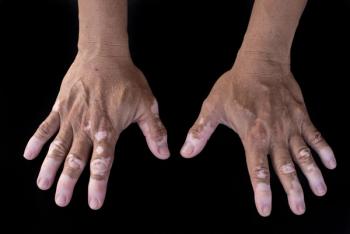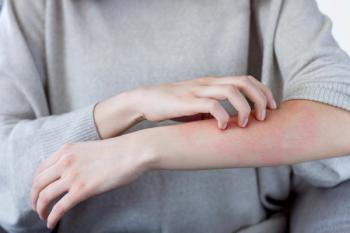
Simvastatin Can Be Effective in Treating Vitiligo Patients with Dyslipidemia
Taking 80 mg of the high-cholesterol statin drug daily can control patients' vitiligo activity and protect them against the hazardous effects of dyslipidemia.
Simvastatin may be an effective treatment for non-segmental vitiligo (NSV) patients with dyslipidemia.
According to a recent study published in Dermatology Therapy, taking 80 mg of the high-cholesterol statin drug daily can control patient's vitiligo activity and protect them against the hazardous effects of dyslipidemia, which is the imbalance of lipids like cholesterol, low-density lipoprotein cholesterol, (LDL-C), triglycerides, and high-density lipoprotein.
Researchers of the Faculty of Medicine at Tanta University conducted the study to evaluate the influence of the simvastatin drug on vitiliginous lesions in non-segmental vitiligo patients with dyslipidemia and study the correlation between Vititligo Disease Activity(VIDA) score and lipid profile.
The clinical trial began with 120 patients with NSV, 79 had dyslipidemia and received simvastatin 80 mg daily till patient had a normal lipid profile or reached 4 months of treatment time. Only 63 patients continued till the end of the study. Researchers also included 60 healthy individuals as a control group in the trial with the patients being well-matched in age, gender and BMI.
All patient's lipid profile, vitiligo area severity index and VIDA were also assessed before and 6 months after the end of simvastatin use.
As a result of sampling serum total cholesterol (TC), triglycerides, high-density lipoprotein (HDL), low-density lipoprotein (LDL), very low-density lipoprotein, and LDL/HDL, ratios showed statistically significant increases in the NSV than in the control group.
In addition, there was a statistically significant positive correlation between VIDA and serum levels of TC and LDL and with LDL/HDL ratio.
Most importantly, simvastatin significantly improved lipid profiles and significantly decreased VIDA. A negative, moderate correlation was found between the decrease in VIDA and duration of disease.
Data shared before simvastatin treatment, the vitiligo area severity index (VASI) ranged from 10.0% to 90.0% with a median value of 40, while the VIDA ranged from 0.0 to 4.0 with a median value of 3.
Though proving to be effective, side effects of simvastatin were found in 12 cases of the 63 patients who completed the study. These included self-limited myalgia (six patients), diarrhea (one patient), headache (two patients), mild creatine phosphokinase elevations (two patients), and mild elevation of liver enzymes (one patient).
Researchers encourage the use of systemic steroids in the treatment of active vitiligo should be with caution as it may worsen lipid abnormalities if they were not previously detected.
"Statins seem to be a good therapeutic modality for patients with NSV associated with dyslipidemia, especially active ceases, as they had a safe profile, low cost, and availability," researchers wrote in the study.
It was also encouraged that further randomized controlled trials should be done to investigate the role of simvastatin in repigmentation and its use in normolipidemic vitiligo patients to clarify its immune-modulator role.
Lastly, further studies should to be done to compare systemic versus topical simvastatin in treatment of vitiligo.
Newsletter
Get the latest industry news, event updates, and more from Managed healthcare Executive.




















































